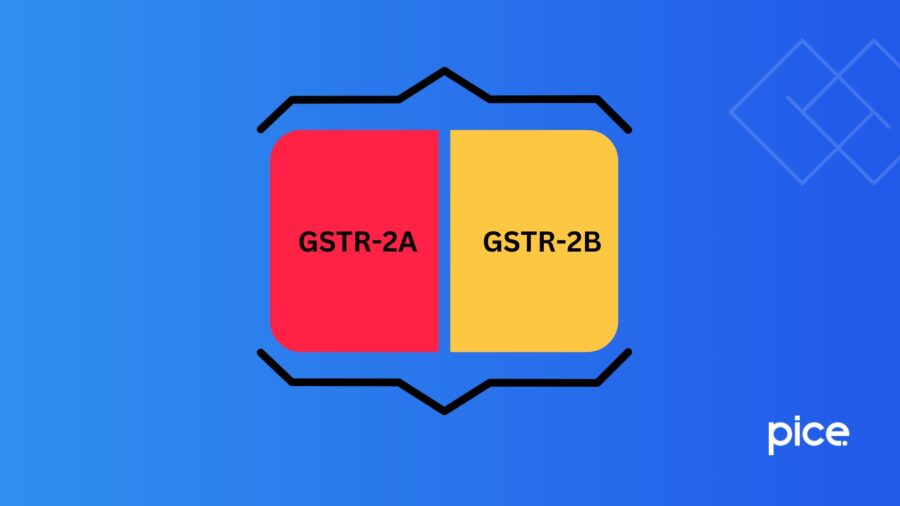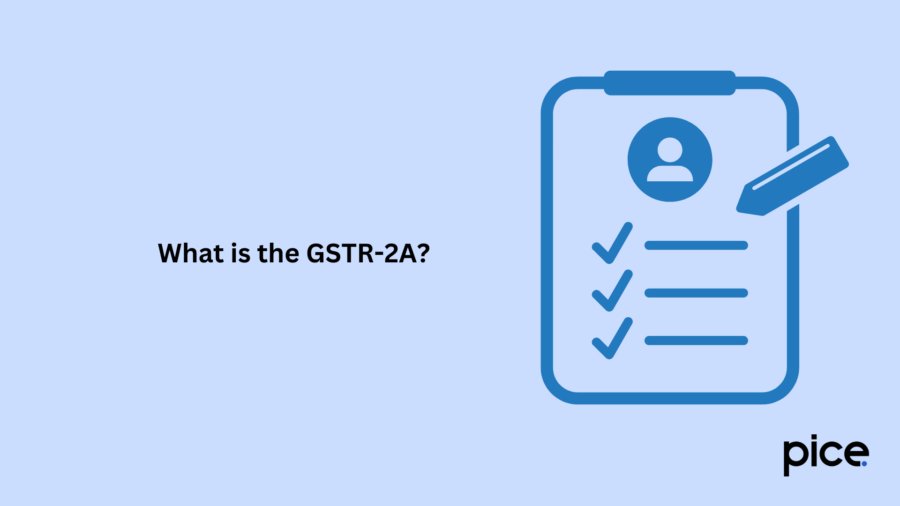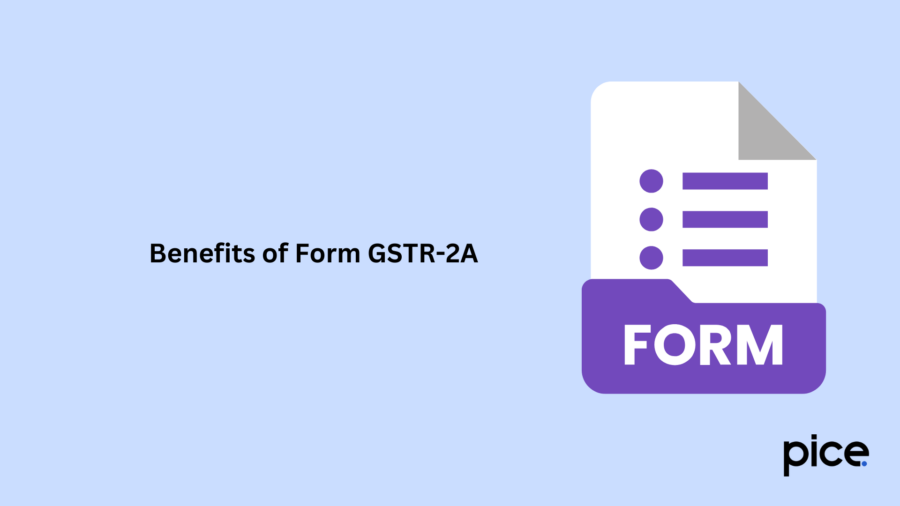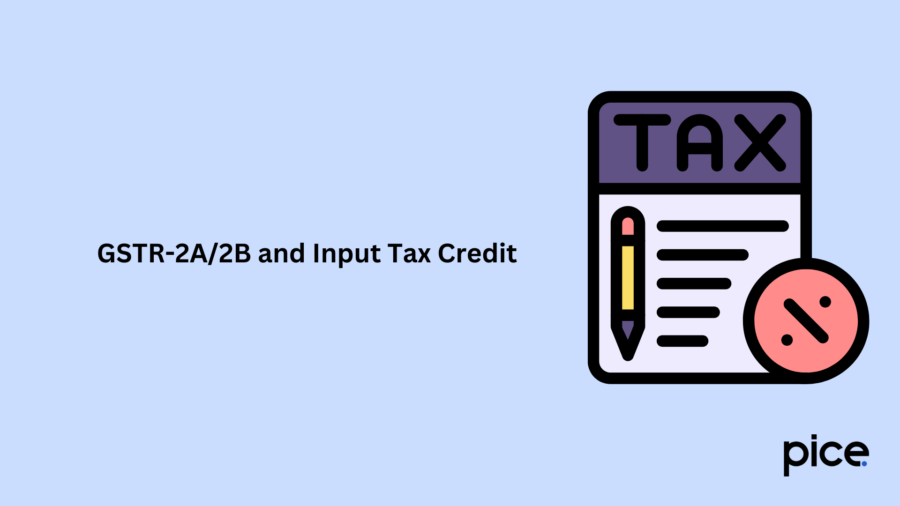Difference Between GSTR 2A and 2B
- 6 Feb 25
- 9 mins

Difference Between GSTR 2A and 2B
Key Takeaways
- GSTR-2A is dynamic, while GSTR-2B is static and issued on the 14th.
- GSTR-2A helps verify ITC, while GSTR-2B provides a fixed ITC summary.
- GSTR-2A updates in real-time, but GSTR-2B remains unchanged.
- GSTR-2B categorizes ITC, while GSTR-2A requires manual verification.
- Regular review ensures GST compliance and accurate ITC claims.
One commonly comes across the terms GSTR-2A and GSTR-2B while filing GST returns. You can notice that both these forms offer insights about a GST-registered taxpayer’s available Input Tax Credit (ITC).
In this guide, we will learn about both these statements and also go through the main differences between GSTR-2A and 2B to better understand their relevance.
What is the GSTR-2A?

The GSTR-2A is one of the most crucial documents in the tax compliance structure. You will find this statement to be dynamic, and it is an auto-populated electronic form that has details about inward supplies made by a taxpayer.
The GSTR-2A retrieves its data from the information fed in GSTR-1, GSTR-5, and GSTR-6 forms by the concerned taxable person. In particular, you can consider it to be a purchase-centric tax return confirming the receipt of the highlighted services or goods.
One of the greatest significances of this GSTR-2A is that it ensures the claimed ITCs are accurate. As it acts as a ledger of all the purchases made during a particular period, it enables business owners to cross-verify their eligible credits against the data provided by the suppliers. All in all, it enforces better transparency and accountability within the whole taxation framework.
Please note that the GSTR-2A is completely a read-only document. If you are self-employed and registered under the GST Act or run a business, it is important to review this form regularly to avoid direct compliance-related issues.
What is the GSTR-2B?
The GSTR-2B is an auto-drafted summarization of the tax credit available for a GST-registered taxpayer as per the data in GSTR-1. It gets auto-generated on the 14th of the following month after a tax period.
The GSTR-2B has several key details. It includes specifics of ITC available as quoted in GSTR-2A, which, in turn, is drafted depending on GSTR-1/IFF and GSTR-5 (non-resident taxable person) submissions. Moreover, this statement is vital as it declares information on the commodities imported as per ICEGATE.
A key difference between GSTR-2A and 2B is that the latter does not utilize real-time data. Conversely, it retrieves figures from GSTR-3B and GSTR-1 as put by the various suppliers in addition to the data in GSTR-6 as mentioned by ISD taxpayers.
After being drafted, the GSTR-2B remains unchanged or static. This implies that supplier-inflicted changes after a given month will not appear in that month's GSTR-2B. However, supplier details submitted in GSTR-1 after the 13th will appear in the following month's GSTR-2A.
Difference Between GSTR-2A and GSTR-2B
In the table below, we have jotted down the difference between GSTR 2A and 2B:
| Points of Distinction | GSTR-2A | GSTR-2B |
| Date of Issuance | GSTR-2A is generated immediately after a registered supplier uploads their invoice details in GSTR-1. | The official GST portal issues the GSTR-2B form on the 14th of every month. |
| Nature | GSTR-2B briefly explains eligible and ineligible input tax credits. | This form is a dynamic document for taxpayers. It means that if you modify the details in Form GSTR-1, the data in GSTR-2A changes automatically. |
| Cut-off Date | As the GSTR-2A is a dynamic statement, there is no cut-off date associated with this statement. Simply put, if you make any changes in GSTR-1/5/6, the subsequent fields in this form are also updated in real time. | Conversely, GSTR-2B is a static return produced on a monthly basis. Once the portal uploads this document it cannot be changed. |
| Source of Information | The data is fetched from GSTR-1/IFF, GSTR-6 (ISD), GSTR-8 (TCS), GSTR-7 (TDS), and GSTR-5 (non-resident Indians). | GSTR-2B takes its data from GSTR-1/IFF, GSTR-5 (non-resident candidates), and GSTR-6 (ISD). |
| Division of Available Input Tax Credit (ITC) | Suppliers do not get a detailed breakdown of ITC in GSTR-2A. | GSTR-2B briefly explains eligible and ineligible input tax credit. |
| Preciseness of Information | GSTR-2A is generated based on the data entered by a supplier or their representative on the GST portal. Therefore, this data may contain inconsistencies and should be verified against records and invoices. | GSTR-2B is a static statement that does not take into account real-time inputs. Nonetheless, it is still recommended to cross-verify the data to maintain GST compliance requirements. |
Benefits of Form GSTR-2A

Businesses benefit in a lot of ways through GSTR-2A filing. One of the biggest benefits to businesses is it provides the accurate reconciliation of Input Tax Credit (ITC).
GSTR-2A gives the suppliers real-time, accurate insights about their inward supplies. In addition, GSTR-2A assists businesses in cross-checking the tax credit claimed against their returns as per the data given by suppliers. It ensures accurate and timely ITC claims.
The next prominent benefit of using GSTR-2A is increased transparency in business relationships. As GSTR-2A shows the data put in other forms by the suppliers, business owners can effortlessly track any human-made errors or discrepancies in the records. It promotes accountability and reliability between end customers and suppliers.
In addition, the concerned parties can get information regarding the GST registration fees, which helps them stay fully compliant with all legal guidelines.
Finally, GSTR-2A acts as a key tool for effective financial management and strategies. It gives business owners a clear picture of the available ITC, thus enabling them to allocate cash flows more responsibly. This feature is especially useful to maintain liquidity and ensure uninterrupted operations.
Benefits of Form GSTR-2B
Despite the significant difference between GSTR 2A and 2B, the latter statement also plays a crucial role in determining the accuracy of available ITC. As GSTR-2B is static in nature, a supplier cannot make any changes once the reports are generated for a particular taxation period. Thus, one gets a definitive and detailed view of the available tax credit through this form.
Another major advantage of filing GSTR-2B is that it helps simplify the regular reconciliation procedure. It gives a monthly overview of ineligible and eligible input tax credit, which assists owners to cross-verify their ITC claims against the data uploaded by the suppliers. This streamlines the method of filing accurate returns and makes sure that your business is GST-compliant.
By overseeing the details in this form, the decision-makers of a business can plan their tax dues comfortably. It gives them better control over cash flows, which, in turn, maintains smooth progress in the long run.
Overall, GSTR-2B is a dependable tool for identifying discrepancies between a taxpayer's records and a supplier's information. It allows businesses to rectify their errors promptly and minimize the chances of incurring additional interest or penalties. Businesses have to regularly review GSTR-2B to make sure the ITC claims are accurate. This fosters increased tax compliance.
GSTR-2A/2B and Input Tax Credit

The GSTR-2A statement is a key guide for taxable persons to reconcile their input tax credit with the particulars given by their suppliers. It allows you to claim precise ITC amounts by offering a fair comparison of the details of inward supplies with their purchase register.
However, a GSTR-2A statement does not serve as the final proof of purchase. It merely lists down the supplier-submitted information. Hence, taxpayers are required to verify the data before filing any ITC claims.
On the other hand, GSTR-2B does not utilize real-time data like GSTR-2A. It is a static document based on a supplier's filed GSTR-5 (for non-resident taxpayers) or GSTR-1/IFF. It helps consolidate the overall ITC information and remains static. Therefore, alterations made by a supplier later on will not be reflected here for the said tax period. Therefore, GSTR-2B further eases the reconciliation process and helps reduce errors in tax filings.
Conclusion
Understanding the difference between GSTR 2A and 2B is crucial to adhere to GST norms. This allows businesses to tactfully manage ITC claims and avoid errors in financial recordkeeping and additional penalties. Moreover, it promotes trustworthy business relations and assists businesses in planning tax payments with ease.
💡If you want to streamline your payment and make GST payments via credit card, consider using the PICE App. Explore the PICE App today and take your business to new heights.
 By
By 
















